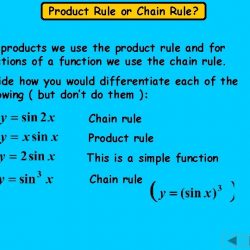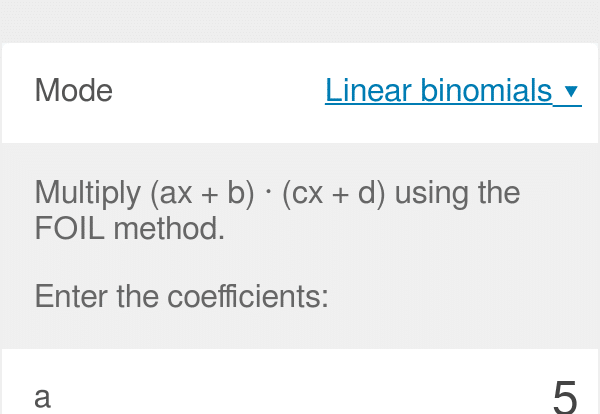The Interval Notation Calculator is a special tool used for easy calculation. The Interval Notation Calculator shows the number line for a given interval. It does this operation in a very short time. The calculator displays the number line within a fraction of seconds. Such a tool is available online. This tool is available for public use.
How to use the Interval Notation Calculator?
The Interval Notation Calculator is very easy to use. The steps are as follows:
STEP 1 – Enter the required interval in the input field
STEP 2 – Click the ‘CALCULATE’ button
STEP 3 – The number line for the input interval shall be shown
The interval that is input can be both closed or open in its nature.
Interval Notation Calculator Form Equation
Sometimes we only know the value of something that is greater than or less than. It is difficult to say what the exact value is. we rather know what the number is greater or less than. We can also identify the range in which the number is located. Inequalities are cases where the actual values of something is not known.
In such a case we only know the probable values and the range in which the actual value might be located. The maximum and minimum values of the probable number are known as the endpoints of the inequality. This statement basically means that the number which we are required to find is probably located between the endpoints mentioned.
Interval Notation Calculator Domain
In Interval Notation we just write the beginning and ending numbers of the interval. The endpoints are written only. And we use a square bracket when we need to include the end value. Or a round bracket when we do not need to include the end value.
We can use a semi-open bracket that does not include the left endpoint. While the right endpoint is included in the set. We can also use a semi-open bracket where the left endpoint of the interval is also included. While the right endpoint is excluded.
The domain includes any of the following intervals;
An open interval will not include its endpoints.
A closed interval is an interval which includes all its endpoints.
A half-open interval includes only one of its limit points.
A degenerate interval is any interval consisting of a single number.
Interval Notation Calculator Graph
An Internal Notation Calculator graph is basically the number line.
A visual representation of numbers on a straight line drawn either horizontally or vertically is known as a number line. This is the definition of a number line. Writing down various numbers on a number line makes it easy for us to compare them. We can also perform basic arithmetic operations on them.
Interval Notation Calculator Example
For instance, we have to plot the interval [2, 4] on the number line. We also have to specify the inequality, topology and calculate its length. Then we have to verify the values using the online interval notation calculator.
Number Line :

Therefore; 1. Inequality = 2 ≤ x ≤ 4
- Topology = Closed Interval
- Length = 4 – 2 = 2
What is an interval?
In math, an interval is a set of real numbers that consists of all the real numbers present between any two numbers of the main set. For instance, the set of numbers x satisfying 0 < x < 1 contains all numbers less than 1 and greater than 0.
An interval is a set containing all the probable numbers between two endpoints. the endpoints may or may not be included in the set. The type of the interval decides on this. Intervals can be written or noted using inequalities on the number line or even in interval notation. Intervals are specifically also written in a notation where the endpoints are signified on a number line.
There are three popular methods of writing intervals:
- Inequalities
- Interval Notation
- Number Line
What is an Inequality?
Even though Math usually has equalities, sometimes we only know something that is greater than or less than. It is difficult to say what the exact value is. we rather know what the number is greater or less than. We can also identify the range in which the number is located. Inequalities are cases where the actual values of something is not known. in such a case we only know the probable values and the range in which the actual value might be located.
Read Also:Factoring Trinomials | Calculator with various steps, examples & solutions
The maximum and minimum values of the probable number are known as the endpoints of the inequality. This statement basically means that the number which we are required to find is probably located between the endpoints mentioned.
For example, Ram and Shyam have a race, and Shyam wins!
What do we already know?
We don’t know exactly at what speed each of them ran. But we confirm the fact that Shyam was faster than Ram. Therefore Shyam ran faster than Ram.
We can write this as; S > R
(Where ‘S’ means how fast Shyam was and ‘R’ means how fast Ram was. The ‘>’ shows that Shyam’s speed was greater than that of Ram)
Therefore, despite not knowing the actual speed of both, we could easily identify who was faster.
The two most common inequalities are greater than and less than. Greater than means some entity is bigger in size than the other. While less than means some entity is smaller in size compared to the other.
Another inequality that is commonly used is equal to. This would mean that either a number is greater than or equal to or less than or equal to the endpoints.
What is the Interval Notation?
Another way of showing an inequality is the interval notation. In this method, the solution sets are indicated with parentheses or brackets. For example, the solutions to x≥4 are written as [4,∞). This is perhaps the most useful method. This is because it applies to concepts studied later. It also applies to other higher-level math courses.
In Interval Notation we just write the beginning and ending numbers of the interval. The endpoints are written only. And we use;
- [ ] a square bracket when we need to include the end value
- ( ) a round bracket when we do not need to include the end value
- ( ] a semi-open bracket that does not include the left endpoint. While the right endpoint is included in the set.
- [ ) a semi-open bracket where the left endpoint of the interval is also included. While the right endpoint is excluded.
What are the types of Intervals?
An open interval will not include its endpoints. We indicate such an interval with parentheses. The endpoints are not touching the probable value of the number. For example, (0,5) means greater than 0 and less than 5. This actually means (0,5) = {x | 0 < x < 5}.
A closed interval is an interval which includes all its endpoints. We denote it with the help of square brackets. For example, [0,5] means greater than or equal to 0 and less than or equal to 5. This actually means [0,5] = {x | 0 ≤ x ≤ 5}.
A half-open interval includes only one of its limit points. We denote such a set by mixing the notations for open and closed intervals. For example, (0,5] means greater than 0 and less than or equal to 5. On the other hand, [0,5) means greater than or equal to 0 and less than 5.
A degenerate interval is any interval consisting of a single number. Or simply, an interval of the form [x,x]. We can include the empty set under this definition. A proper interval is a real interval that is neither empty nor degenerate. Such an interval has infinitely many elements.
What is the Number Line?
A number line is a visual form of numbers written on a straight line. This line is used to compare numbers. We place the numbers at equal intervals on an infinite line that extends on both sides. This line extends both horizontally and vertically. As we move towards the right side of the number line, the numbers increase. And while we move towards the left, the numbers decrease.
A visual representation of numbers on a straight line drawn either horizontally or vertically is known as a number line. This is the definition of a number line. Writing down various numbers on a number line makes it easy for us to compare them. We can also perform basic arithmetic operations on them.
There are three parts of a number line. They are – negative side, zero, and positive side. Numbers to the left of 0 are negative. While the numbers to the right of 0 are all positive. The positive numbers do not have any sign representing them. While the negative ones are prefixed with a minus ‘-’ sign.
So, we can conclude that on a number line, the numbers present on the right are larger than the numbers on their left. For example, 8 comes to the right of 1, so 8 > 1. Look at the image of a number line given below.
FAQs
What is Interval Notation Calculator union?
Another symbol that can be used to include many more numbers in a set is the union. The union symbol is an upper ‘U’. The sign signifies the inclusion of a set along with the other.
With the union symbol, you can include numbers out of the main set. This is done to add more possibilities to the interval in case there are numbers omitted in the middle.
Where is Interval Notation Calculator?
Interval Notation Calculator is easily found on the internet. Various sites host this application. You can search ‘Interval Notation Calculator’ and will find a suitable app.
What is Inequality in Interval Notation?
Sometimes instead of equations we have inequations. Here we do not know the exact values. Hence, we are only aware of the probable values. Such a math entity is called an inequality.
How to find Interval Notation?
To find the interval notation, you have to know the value of the end points of the number. The proximate values of the set are needed and then you will know the interval. The interval contains all the possible values of the solution of your equation.
What is Interval Notation Calculator Number Line?
The Number Line is a math tool used to simplify the interval notations of an inequation. All the numbers are plotted on the number line. The number line has all the possible values of the solution set.
How to write in Interval Notation?
In order to write in interval notation use the brackets. Any of the brackets can be used to specify the kind of the set. The brackets to be used are [] or () or a mixture of the two.








